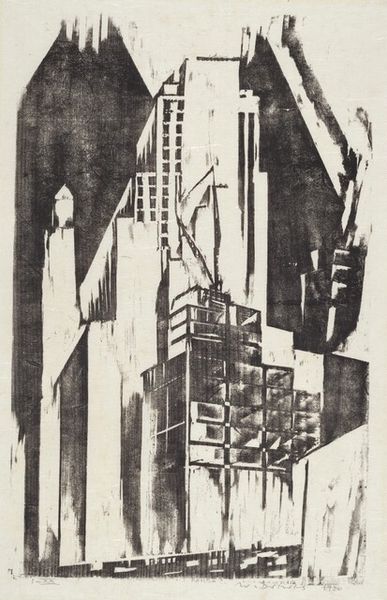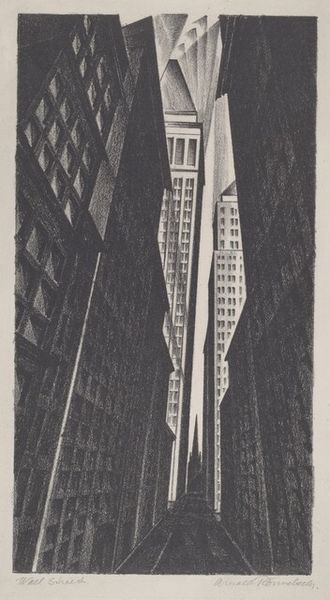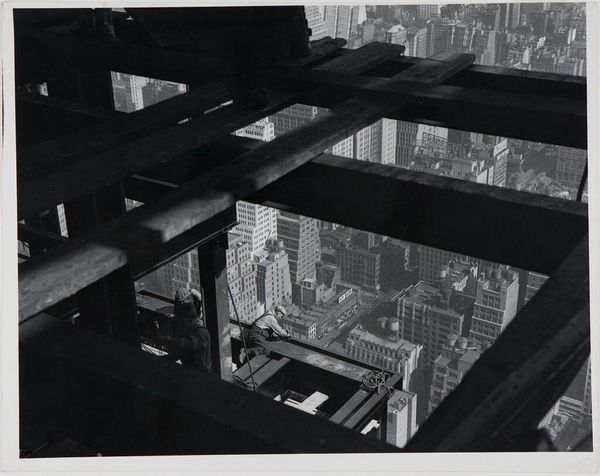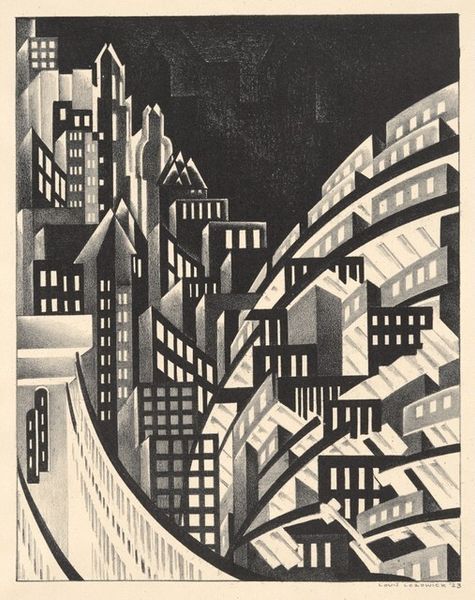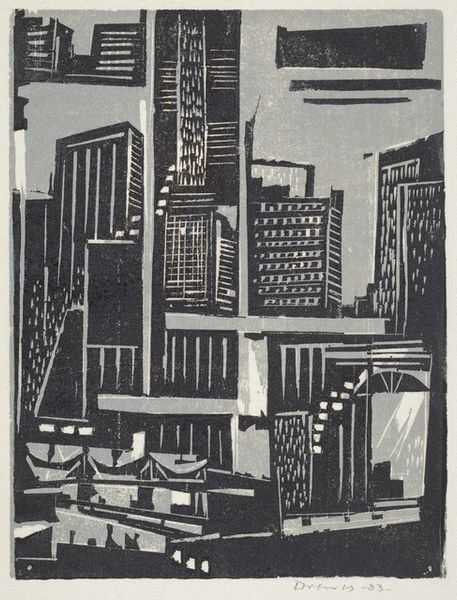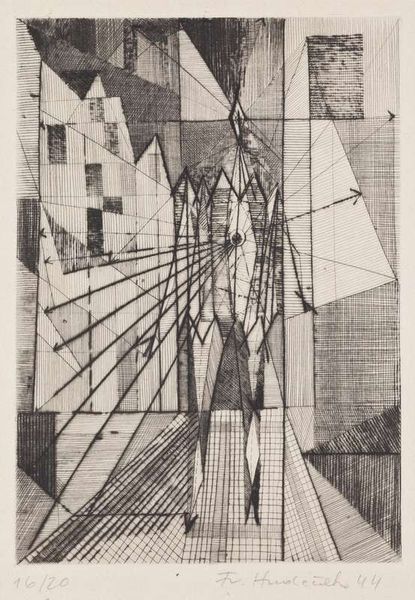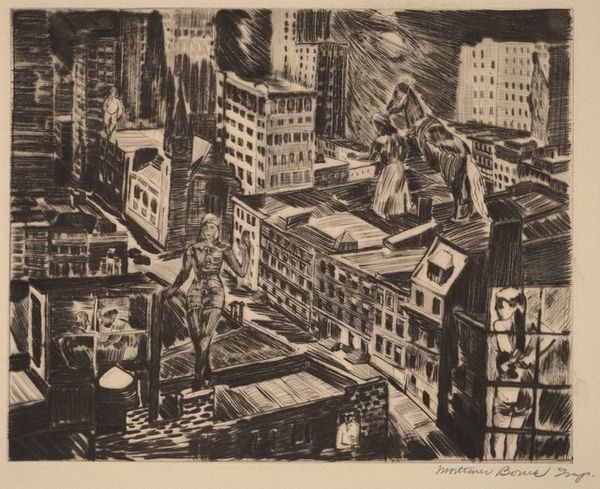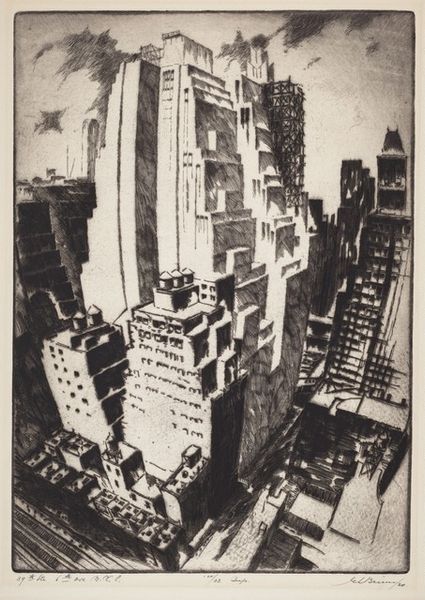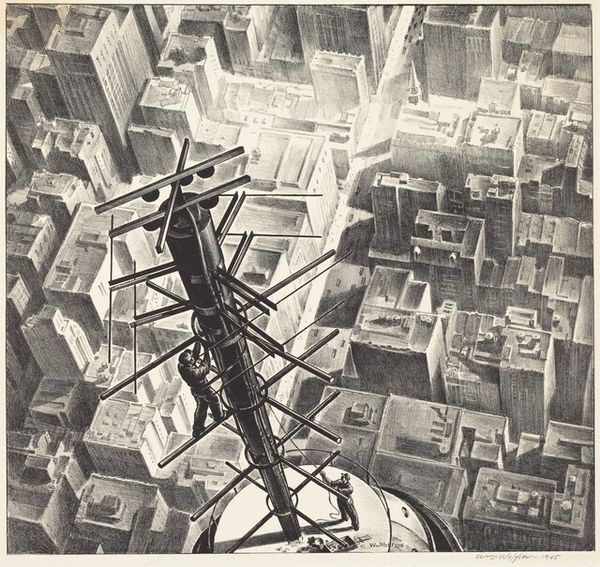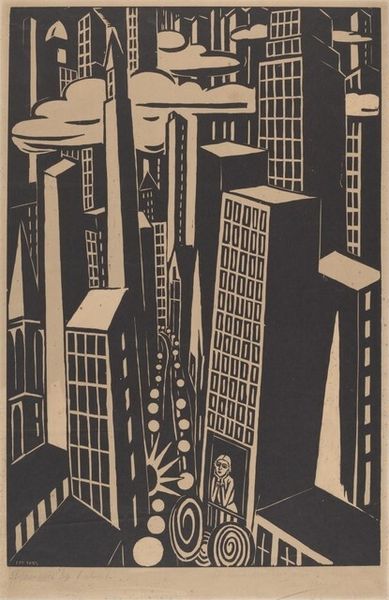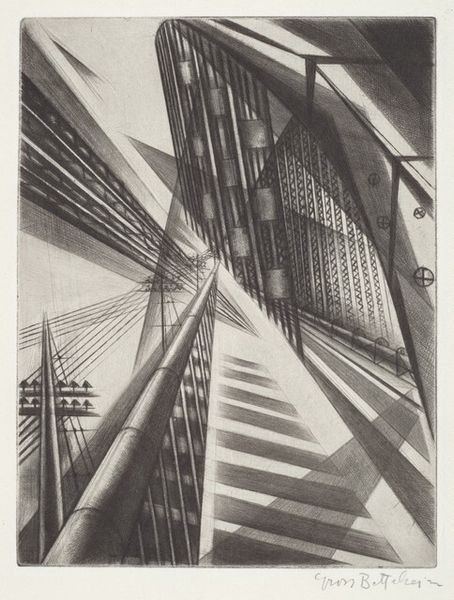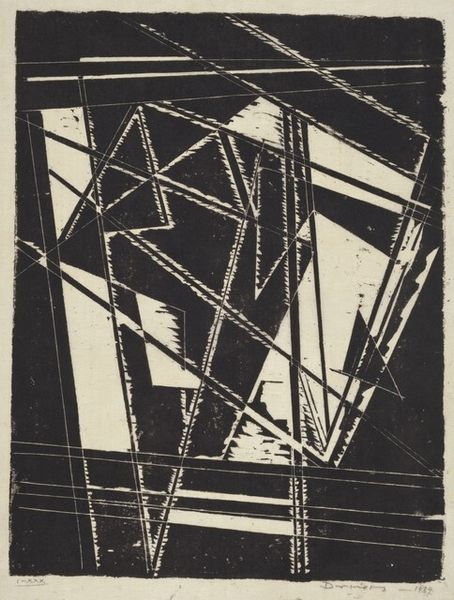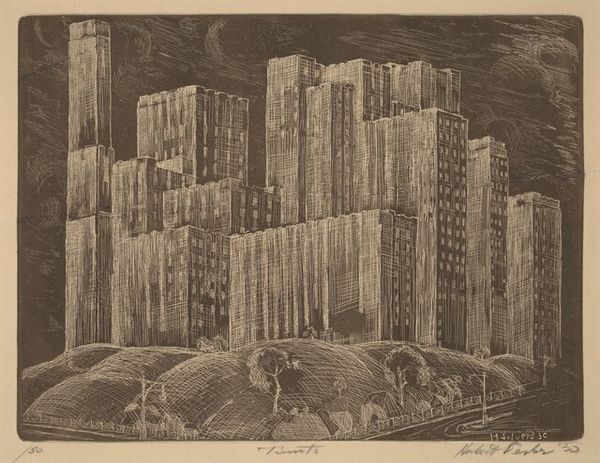
# print
#
geometric
#
art-informel
#
abstraction
#
line
Copyright: National Gallery of Art: CC0 1.0
Editor: So this is Nino Abranos's "Festa," from 1955, a print on paper. There's a striking contrast between the white geometric shapes and the deep black background. It feels…urban, almost like a stylized cityscape. What are your thoughts on this work? Curator: Well, when looking at a print, the first thing that strikes me is the means of its production. How does the choice of printing – with its inherently reproducible nature – affect the perceived value and accessibility of art in postwar Italy? Consider that "Art Informel," to which this is related, broke with formal constraints, often using humble materials. Is "Festa," then, democratizing art-making? Editor: Democratizing… that’s an interesting way to look at it. I was focusing more on the aesthetic impact of the stark lines and the geometric forms. It seems very constructed, despite being abstract. Curator: Exactly! That constructed nature, that reliance on process, reveals a great deal. The artist painstakingly carved away material to produce this image. It invites consideration on labor - artistic, yes, but also of the laborers reflected in these urban forms. The geometric motifs may evoke modernist ideals in city design and architecture, which aimed to impose a rational order. What kind of consumption is suggested? Editor: It almost feels critical, then, of those ideals, or maybe showing the rough reality of their implementation? It’s far from perfectly smooth; there's a textural, almost gritty quality to it. The print itself seems…fragile, like it could be damaged. Curator: Fragile yet reproducible! And think about distribution. How many copies were made? Where were they displayed? All that contributes to its meaning, far beyond a simple “celebration," the titular "Festa." Editor: I hadn't considered the actual production of the piece as being so key to its meaning. Curator: Focusing on materiality helps unlock layers within the image beyond the immediately visual or symbolic, it shows a different aspect of its cultural significance. It provides a new view of what “Art Informel” even could become through a material and reproducible object like this print.
Comments
No comments
Be the first to comment and join the conversation on the ultimate creative platform.

